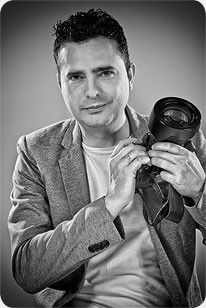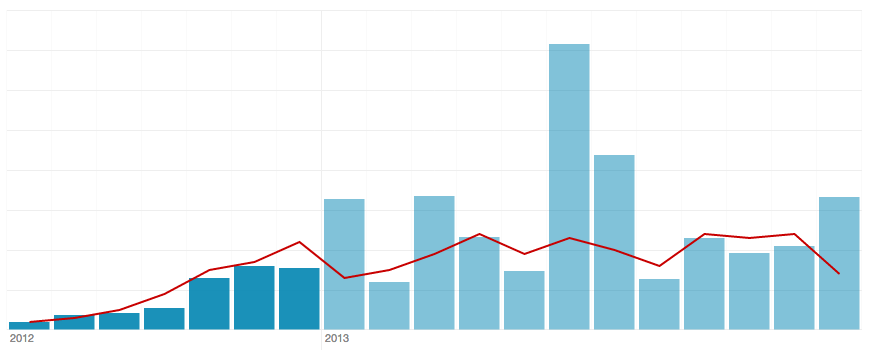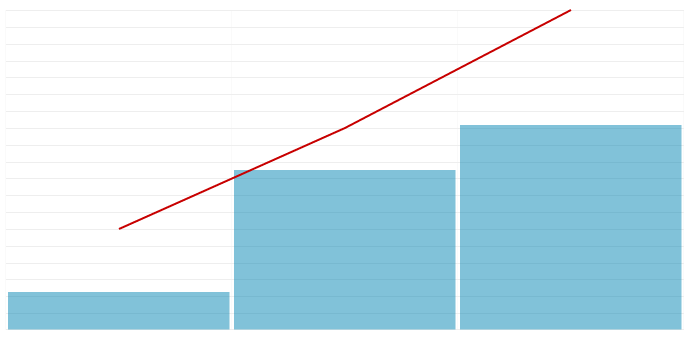Interview Series: Victor Torres Published on by luis in Interviews
 Today we welcome Victor Torres, an influential microstocker very well known in the the spanish speaking microstock scene. Apart from being a great urban and landscape photographer, he also has a very broad knowledge of the microstock business and shares insights and great interviews on his platform MyMicrostock.net.
Today we welcome Victor Torres, an influential microstocker very well known in the the spanish speaking microstock scene. Apart from being a great urban and landscape photographer, he also has a very broad knowledge of the microstock business and shares insights and great interviews on his platform MyMicrostock.net.
We are happy to learn why Victor thinks it is good to regularly review your old discarded images! You never know if they will transform to best sellers!
Thank you very much for participating in our series of Stock Performer customer interviews!
Thank you very much. Nice that you have called me for this series of interviews.
Tell us, where do you live and where are you from? Is that where you produce your photography?
I live in Madrid, Spain. I mainly do travel photography, so I produce wherever I travel. I have been fortunate to have traveled to many interesting places. Many of them that have a great demand for photos. This has helped me generate a lot of sales in the microstock market.
Currently I want to start working on sessions with models and introduce myself into lifestyle photography. It is a subject I am total newbie but attracts me a lot. In Madrid we have many models and interesting locations, so now I just need to find some time to schedule sessions.
When did you discover your interest in photography?
I’ve been passionate about photography since I was little. My father used to buy good analog cameras and fortunately I was able to mess around with them. The world of imagery always captivated me, but I chose to direct myself towards advertising. I studied Advertising and Advertising Art at University, so I am currently Art Director at a design studio in Madrid.
How did you find microstock and why did you get involved? Has it changed your life?
My experience with stock started from the client’s side in 2005. Two years later I decided to try selling my photos on iStock. It was really interesting for an amateur photographer like me. I have learned a lot of photography techniques and tips thanks to the huge amount of rejections I got on those first days!
Of course it has changed my life. Now, microstock is like a second job for me and thanks to it I have create the MyMicrostock.net platform which has allowed me to meet many interesting people over the years.
Thank you for your image! What inspired you to take this picture?
This image was one of my discarded images when I edited the photos I shot in USA. Reviewing old files I decided to give it another chance, so I edited it to get an attractive image.
The original photo was very flat, bland … Manhattan that day was very cloudy and it was difficult to take interesting photos. With a few tweaks I got an acceptable “product”. I upload the file to the agencies and now it is currently one of my best-sellers in my microstock career!
What does this image’s revenue chart tell you?
As we can see in the chart, I uploaded the image on July 2012 and now the sales are growing little by little. I imagine it will still get good sales for at least the whole of next year until it begins to decay.
Thanks to Stock Performer I noticed that this image was rejected by other agencies like Shutterstock, so I made some adjustments and uploaded it again to those agencies to not lose potential sales. Here you see how well it has done on Shutterstock after the rework:
Did you expect such a revenue chart? Are you happy with it?
No, I did not expect that success! The New York skyline is maybe the most photographed in the world. You can find awesome images of it at all agencies so I thought, at first, I would not get many sales but, luckily, it worked really well. The same thing happened with a picture of the Eiffel Tower, which is currently my iStock bestseller.
The microstock market is huge. How do you analyse the market? How important is it for stock artists to analyse the market?
I think it is very important to analyze the market to see what images sell more, the latest aesthetic trends, etc.. Competition forces us to adjust the budgets and reduce costs to not risk too much, so it is very useful to see the data offered by Stock Performer.
Within our own portfolio, we can see which images sell more and focus future sessions along those lines, using the same model, the same retouching, etc… To be a good stock photographer it is not enough just to make good pictures, you need to become an analyst and manage statistical data.
Do you believe in “quantity” or “quality”? What is most important for you and why?
I think both are important. If you can provide a large portfolio of high quality images your success will be assured. I bet more for quality, but if your portfolio is very small, however good your pictures are, your sales will be low.
What does your typical production process look like?
I work alone. My production is very small. I do the previous analysis, take photos, retouching, keywording and everything else. But I’m convinced that if my productions were greater, I would hire assistants or external retouching companies as Proretoque.com (MyMicrostock.net partner). The important thing in this business is to produce a lot and not waste much time on tasks that are not profitable.
Would you recommend photographers to take risks and invest in employees or assistants, or outsource, to help them in their production process?
Of course. Maybe not in the first steps into this industry. I think it is better to check how your work is accepted in the market, understand what clients want and evaluate if your production fits this type of business. Then, you are prepared to take risks.
Where do you think the stock photography business is going? How do you see the next years?
That’s a good question, difficult to answer. Day by day the agency databases are growing very quickly with (sometimes) a lot of low quality content. The clients need to surf through a high amount of pages to find the right image for their project.
The competition is great and maybe the future of this business will go to new concepts such as Stocksy’s. I think the market needs more midstock agencies, with exclusive content and higher commissions for the authors.
What is your advice to remain a successful stock photographer in upcoming years?
Joining this industry now is really difficult due to the increase in competition. Now you need to have very good skills taking photos, you can’t make enough money for a living just uploading your vacation snapshots as many photographers did 10 years ago.
You need to be patient and work hard for at least a few months or a year. And all this without looking at your earnings because it can be frustrating for a newbie. I think with perseverance, a job well done and some patience you can build something interesting in this sector.
Tell us, when you are not doing photography, how do you relax and enjoy your free time?
I love to travel and enjoying my vacations with my wife. I enjoy sports a lot, played in an amateur soccer team in Madrid, and also love to go outdoors for cycling or paddle tennis. I love music, some years ago I used to play electric guitar in a rock band and love to go to live concerts. Internet, art, graphic design and cinema are other of my passions.
Thank you very much for your time, it was a pleasure talking to you!
The pleasure was mine, thanks a lot for inviting me to this fantastic interview series. Congratulations on all the work you are doing with Stock Performer. It’s a boon for us microstockers.


